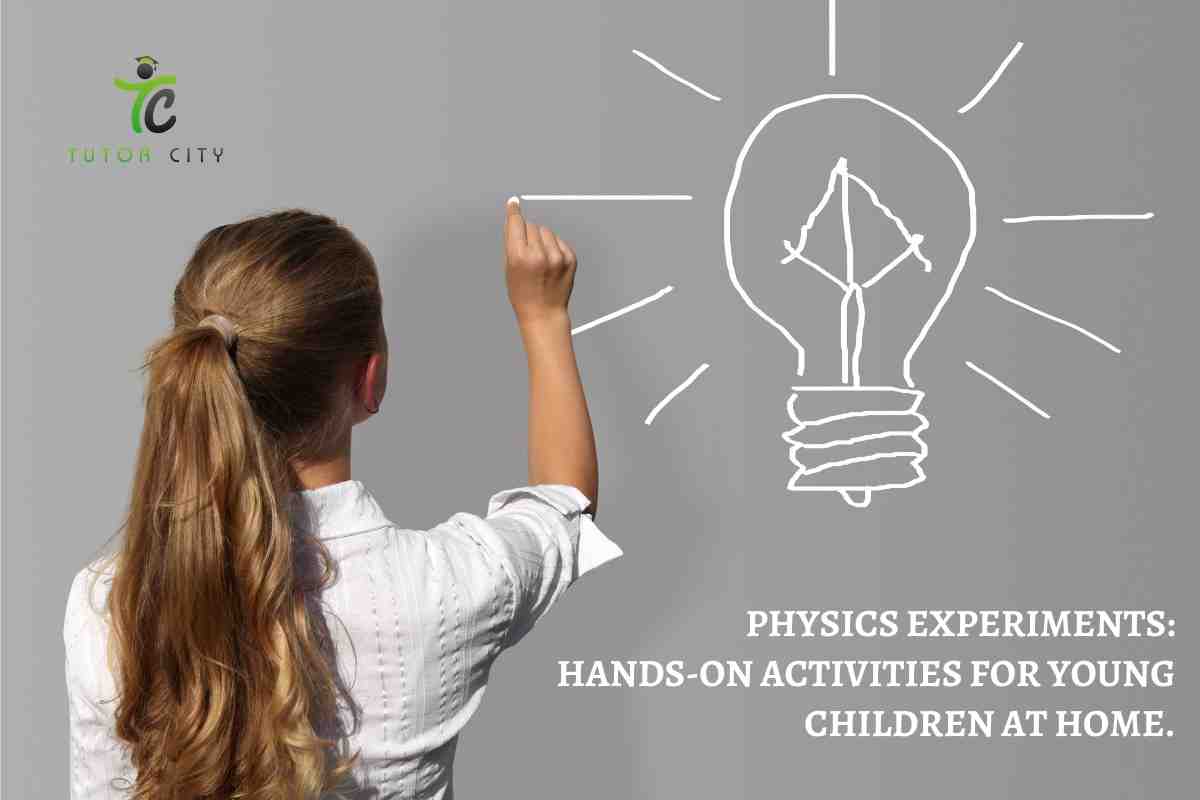
- Published by: Tutor City
- October 10, 2020
- Education
Physics Experiments: Hands-on Activities For Young Children At Home
If you would like your child to study physics better and you are searching for some fun experiments to conduct at home, then you are in luck!
This article will provide you with some useful ideas and help you create some engaging physics experiments in the comfort of your own home that will not only teach your child some valuable lessons but will also help you and your child bond and have fun together.
Children are naturally curious creatures, and they will definitely enjoy doing these experiments and discovering new things as well as spending time with you.
The experiments listed below are relatively safe, so you can conduct them even if you have small children.
The benefits of hands-on activities for children.
In order to develop a child's mind, you need to constantly challenge it with new ideas. By engaging in these science projects, children will become resourceful, and they will also learn several crucial skills such as observing, problem-solving, etc.
As I have already mentioned, they are naturally very curious, so you will not have to work very hard on getting them interested in the project mother nature has done the job for you!
Children also tend to be very inquisitive and tend to ask a lot of questions. So doing physics experiments with them at home is a great way to make them ask the right questions about the right subject so that they gain a better understanding of the material world around them.
And last but not least, it is just a fun way to spend time together!
If you don't know how to entertain your children during the summer months when they don't go to school, you can engage them with physics. The laws of physics are in action all around us; all we need to do is observe.
What will the physics experiments involve?
Physics studies motion mass-energy and how they interact with each other. The experiments will center on observing motion and energy and how they affect each other. Your child will grasp some basic underlying principles such as acceleration, gravity inertia, and how energy is made.
Of course, these experiments are rather simple, and they will not give your child a full understanding of how the material world around us works, but that is not what they are designed to do. They are designed to create a spark of interest in the child's mind and make them interested in the basic principles of physics so that hopefully, in the future, they will want to gain more knowledge about the subject.
Children are more likely to study subjects they consider fun and have fond memories of; this is not rocket science!
So without further ado, let's look at the experiments, the equipment you need, and how you should do them.
A plastic bottle rocket.
We'll start with the hardest one on the list. Older children will probably appreciate this more. For this experiment, you will need any small plastic bottle filled almost all the way up with vinegar, a paper towel square, and half a tablespoon of baking soda. You will need to be a big open space to conduct this experiment (with no people or other children nearby). This is not something you can do indoors!
Read also: How to make a bottle rocket
You will also need to tape three sticks to the sides of the bottle so that they act as a sort of "stand." Place your baking soda on the paper towel and gather the ends; put the paper towel into the bottle but be careful not to let the vinegar and baking soda mix with each other yet!
A bit of your paper towel should be hanging out of the neck of the bottle so that you can fix it in place with a lid. Once you have closed the lid, quickly flip your bottle upside down. Leave it to stand unassisted on the ground and get as far away from it as you can.
The baking soda and vinegar mixture will create gas, and eventually, your bottle rocket will explode. Your child may assist with pouring the vinegar into the bottle or with preparing the baking powder wrapped in the paper towel, but needless to say, the "flip the bottle" part needs to be done by an adult for safety reasons.
Static electricity snake.
Now, this is a good one for the little ones. Any child can do it; all you need is a paper tissue square, a plastic ruler, a pencil, a pair of scissors, and a wool jumper or wool carpet that is lying around your house. Cut a basic wiggly snake shape out of the tissue paper.
The child can decorate the snake if they want. Next, you need to vigorously rub your plastic ruler over the wool cloth and then hold the ruler over the snake's head and let it linger. You will see that the static electricity created by the plastic ruler and the wool will cause the snakes to head to rise.
Read more about this experiment here.
A swinging pendulum.
A pendulum is an object that is hung from one point so that when you let go, it swings back-and-forth freely due to gravity. You can use a stopwatch on your mobile phone to measure the time it takes to perform one full swing back and forth, and you can experiment with objects of different weights and the ropes of different lengths to see how that affects the time of the swing.
Lemon battery.
The most important thing for creating a lemon battery is using the correct metal wires, copper, and zinc in this case. And of course, you will need a lemon to stick these wires into. As the current flows from the copper wire to the zinc wire, the lemon juice acts as a type of energy conductor.
This type of battery is, of course, extremely weak, but if you connect it to a very small clock, you might be able to see the hands move.
Check this article here for more description.
Kinetic energy test.
This is ideal for preschoolers and small children. All you need is a board that can be inclined on an angle that you can control and two toy cars. Place the cars on the raised edge of the board and let them race down to the bottom.
For children, this is fun in itself, but by attaching different weights to the cars or oiling up the surface of the board to make it more slippery, you can explain to your child how the friction against the surface and the weights affect the result.
Read about Kinetic energy experiment here.
In the end, no matter which experiment you decide to do with your child, remember that first and foremost, it should be fun!
Your goal is to build a positive association in your child's mind between physics and time well spent. If you manage to do that, then hopefully, in the future, they will be motivated to study this subject further and discover its underlying principles on their own.
Related information:
Best Physics tutors to help you
What are some hot research topics in physics?
7 Awesome tips to ace O level Physics
How to prepare for A-level Physics Practical Exam Questions






